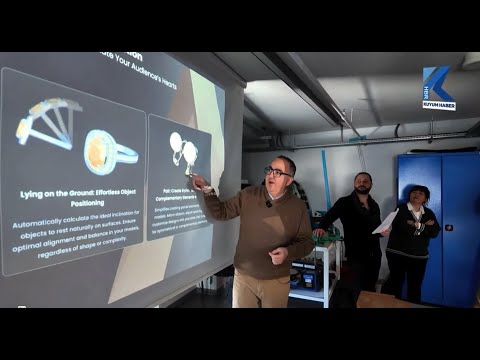Your Cart is Empty
Customer Testimonials
-
"Great customer service. The folks at Novedge were super helpful in navigating a somewhat complicated order including software upgrades and serial numbers in various stages of inactivity. They were friendly and helpful throughout the process.."
Ruben Ruckmark
"Quick & very helpful. We have been using Novedge for years and are very happy with their quick service when we need to make a purchase and excellent support resolving any issues."
Will Woodson
"Scott is the best. He reminds me about subscriptions dates, guides me in the correct direction for updates. He always responds promptly to me. He is literally the reason I continue to work with Novedge and will do so in the future."
Edward Mchugh
"Calvin Lok is “the man”. After my purchase of Sketchup 2021, he called me and provided step-by-step instructions to ease me through difficulties I was having with the setup of my new software."
Mike Borzage
V-Ray Tip: Enhancing Workflow Efficiency with V-Ray Distributed Rendering: A Practical Guide
October 10, 2024 2 min read

V-Ray's Distributed Rendering can significantly enhance your workflow efficiency by utilizing multiple machines to render a single image or animation. This feature is invaluable when working on high-resolution renders or complex scenes. Here’s a concise guide to understanding and implementing V-Ray's Distributed Rendering effectively:
- Setup Requirements: Ensure all participating machines have V-Ray installed. They should be networked together, and it’s beneficial if they share a similar configuration for optimal performance. The V-Ray Swarm or V-Ray Standalone applications are typically used for managing these nodes.
- Licensing: Each machine involved in the distributed rendering process requires a V-Ray license. Verify your licensing agreements and availability, and contact NOVEDGE if assistance is needed.
- Network Configuration: Check network connectivity between all machines. The manager machine, where the rendering process is initiated, must be able to communicate with all rendering nodes. Ensure firewalls and security settings allow for this communication.
- Asset Management: All textures, proxies, and other assets must be accessible to each rendering node. Using a shared network location is recommended to ensure each node can access the necessary files without delay.
- V-Ray Distributed Rendering Settings:
- In V-Ray's Render Setup dialog, navigate to the Settings tab.
- Enable Distributed Rendering.
- Click on Settings to configure the list of servers (render nodes).
- Add the IP address or hostname of each participating machine.
- Testing and Troubleshooting:
- Perform a test render to ensure all nodes are contributing. Check the V-Ray log for any errors or connection issues.
- If some nodes are not contributing, verify network settings and asset accessibility.
- Benefits:
- Reduced rendering times due to the workload being distributed across multiple machines.
- Ability to handle higher resolution images and more complex scenes without massive time increases.
- Scalability; add more machines to the network as needed for larger projects.
By integrating V-Ray's Distributed Rendering into your pipeline, you can substantially decrease render times, allowing more time for creative tasks and iterations. For more information and to explore options that best fit your production needs, visit NOVEDGE.
You can find all the V-Ray products on the NOVEDGE web site at this page.
Also in Design News

💎 Rhino Artisan Arrives in Turkey: Revolutionizing Jewelry Design
February 27, 2025 1 min read
Read More
ZBrush Tip: Mastering Curve Surface for Unique Textures in ZBrush
February 27, 2025 2 min read
Read MoreSubscribe
Sign up to get the latest on sales, new releases and more …



